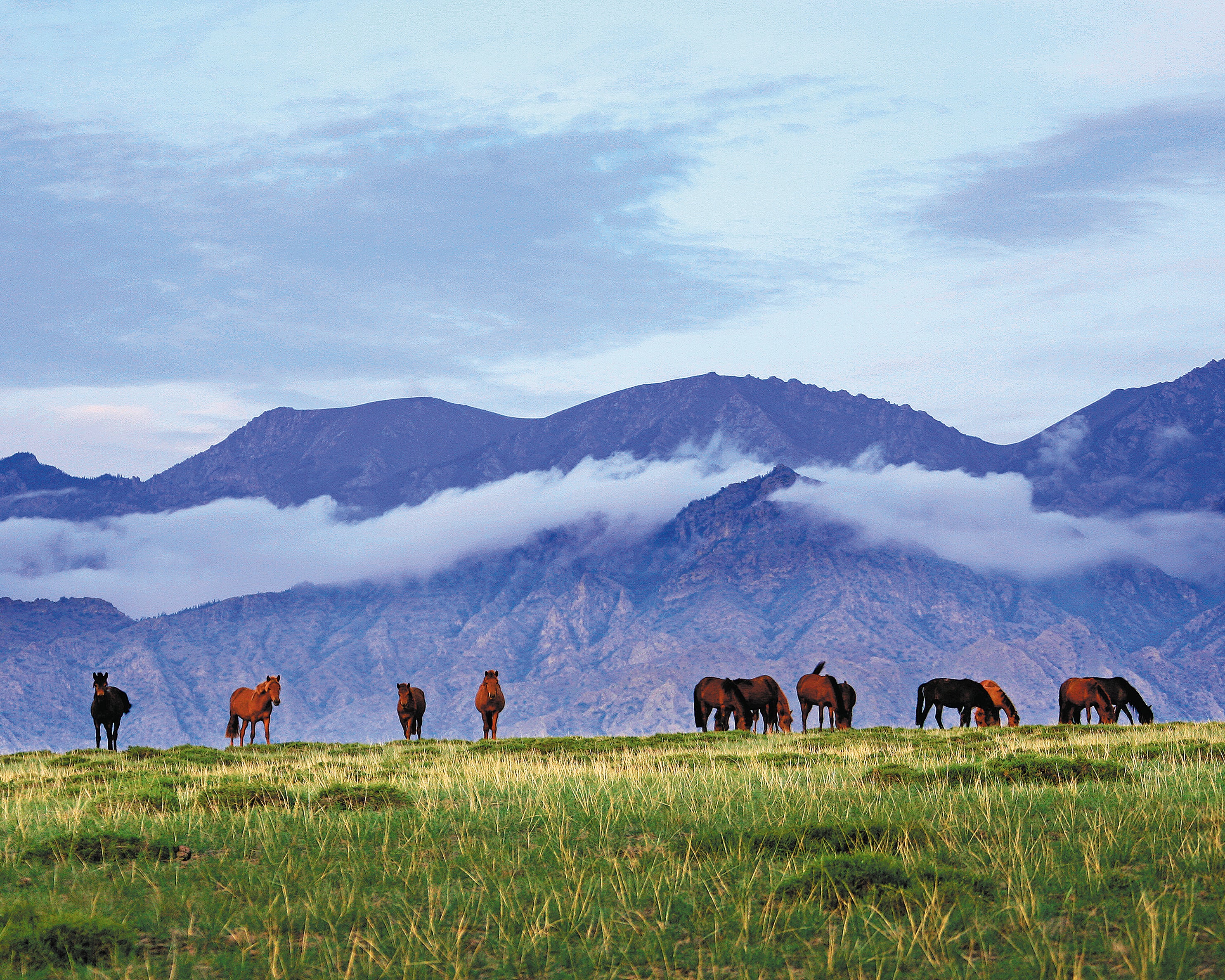Cloud planting stops deserts in their tracks
THE ARTICLES ON THESE PAGES ARE PRODUCED BY CHINA DAILY, WHICH TAKES SOLE RESPONSIBILITY FOR THE CONTENTS

In the 1980s the expansion patterns of three deserts indicated that they would eventually meet in Alshaa League, Inner Mongolia autonomous region.
That possibility led many local farmers and herders to leave their homes in search of better opportunities elsewhere.
The league, where large areas of three major deserts, the Badain Jaran, the Tengger and the Ulan Buh, are located, has long been plagued by desertification.
The encroaching sand threatened settlements near the Yellow River and the Helan Mountains, so in recent decades residents who refused to leave have tried a variety of methods to save their homes.
After Liu Hongyi graduated from Zhalantun Forestry College in Hulunbuir, Inner Mongolia, in 1986, the Alshaa League native began working at a sand control station near his home.
He quickly organised a team to undertake afforestation techniques including cloud planting, a process that involves using aircraft loaded with tree and grass seeds that are sown from the air over land in need of greening. The method allows seeds to be sown in remote mountainous regions, sandy areas or places difficult to reach with conventional land vehicles.
Cloud planting is usually done at the edge of deserts where vegetation covers less than 5 per cent of the land. The aim is for trees to grow rapidly and for their roots to provide protection by anchoring the sand.
To aid the seeds’ survival, the work is usually done in June and July, when there is more rain, Liu said. The usual mix is one pound of seeds per 800 square yards because the scant water resources are unable to support higher volumes.
“Despite suggestions that areas with annual precipitation of less than 8 inches were unsuitable for this technique, forestry experts and workers in the league persevered with their experiments,” he said.
In Alshaa, annual precipitation ranges from 1.5 inches to 6 inches; the average annual evaporation level is as high as 165 inches.
The area has an extremely fragile environment, the most serious degree of desertification, the worst natural conditions and the greatest difficulty in land governance, the local government said.
In the 1980s locals turned to cloud planting for afforestation. Lacking satellite technology, they manually marked key areas for sowing seeds, using red flags and mirrors as reference points for pilots. In the scorching desert areas the forestry workers carried their tools and food supplies while walking for hours to reach the designated spots.
Initially the growth rate of the seedlings was more than 20 per cent, but the survival rate declined every year as a result of trees being planted in unsuitable areas and inadequate management and protection, Liu said.
Starting in 1998, he and his peers recognised the need to change tree species, so they replaced traditional types such as poplars and elms with “shrub-type” native species such as suosuo trees.
Choosing suitable trees and sowing them using cloud planting that provided efficient large-scale coverage and rapid results at low cost proved an appropriate method for the vast and sparsely populated Alshaa region, he said.

Over the past 40 years about 1,800 square miles of land in the league has been afforested using cloud planting. They form two belts that stretch a combined 286 miles and range from 2 miles to 12 miles in width on the southeastern edge of the Tengger and Ulan Buh deserts.
In recent years the local forestry department has been planning a 120-mile-long sand control belt at the intersection of the Badain Jaran and Ulan Buh deserts.
All the efforts have yielded positive results. Over the past 40 years the region around Alshaa has undertaken desertification control across more than 14.8 million acres that has resulted in forestry coverage rising from about 3 per cent to 8 per cent. The vegetation coverage on the grassland has also risen, from less than 15 per cent to 23 per cent.
